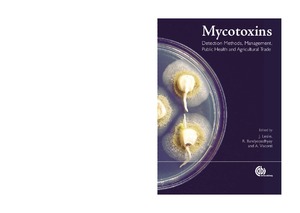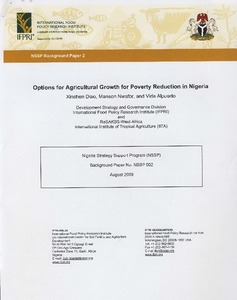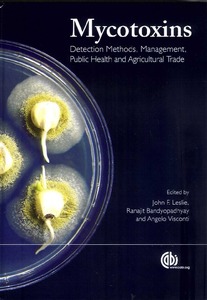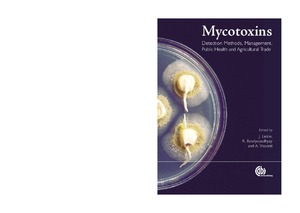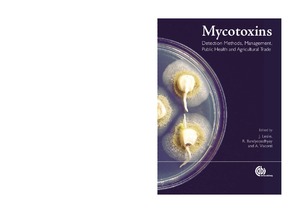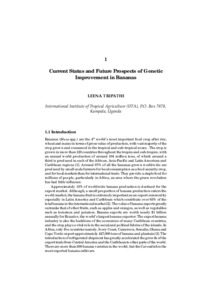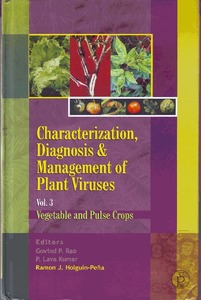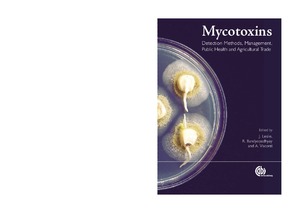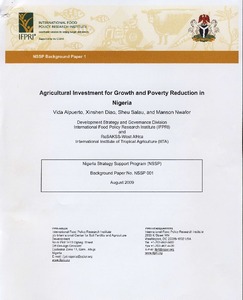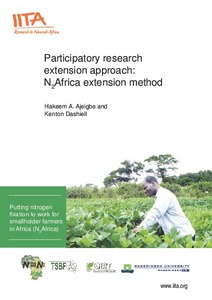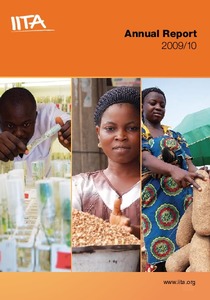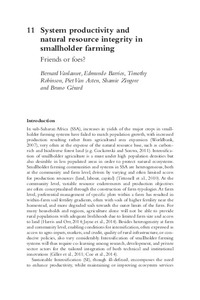Welcome to the International Institute of Tropical Agriculture Research Repository
Books and Book Chapters: Recent submissions
Now showing items 801-820 of 977
-
Promoting regional trade to enhance food security: a case study on the border region of Tanzania and Zambia
(2009)Food security is an issue of high importance for Sub-Saharan African countries. With the on-going process of regional integration, the promotion of regional trade between neighbouring countries is one strategy to enhance food security.The study introduces an Analytical Framework (AF) to evaluate the potentials of regional trade to enhance food security. Three working levels are defined: (1) A desk study to identify relevant countries or regions, (2) a fact-finding mission to collect in-depth data ... -
Options for Agricultural Growth for Poverty Reduction in Nigeria
(2009)This study analyzes growth options in agricultural sub-sectors to accelerate overall economic growth and reduce poverty in Nigeria in the next nine years (2009-17) using an economy-wide, dynamic computable general equilibrium (DCGE) model. The model results show that if the individual agricultural subsectors' growth targets set by the Nigerian government can be achieved, the country will have 9.5 percent of agricultural annual growth and 8.0 percent of GDP growth in the next 10 years. The national ... -
Institutionalizing mycotoxin testing in Africa
(2008)The aflatoxin class of mycotoxins is one of the most important food safety concerns at domestic and international levels. The widespread occurrence of aflatoxin contamination in Africa and other tropical countries is a major potential hazard to humans and domesticated animals, and causes severe health and economic problems. Africa is in a precarious position because the environmental conditions and cultural practices across the continent favor fungal attacks of crops and commodities. Other factors ... -
Institutional aspects of sanitary and phytosanitary issues in ECOWAS trade
(2008)The Economic Community of West African States (ECOWAS) has accepted trade liberalization and globalization as important policy directions. West African trade with Europe and the United States is already much greater than trade with other developed countries or intra-regional trade, although trading with developed countries may entail considerable difficulties due to trade regulations and the need to conform to Sanitary and Phytosanitary (SPS) standards. There is generally a low level of awareness ... -
Food processing to reduce mycotoxins in Africa
(2008)Mycotoxins have both economic and health impacts because they contaminate human food and animal feeds. A central question is whether there are food processing strategies that reduce mycotoxin levels in food products. In this chapter we critically review food processing methods tested in Africa for their efficacy in reducing mycotoxin contamination in maize and peanut. These methods include cleaning, separation of screenings, washing, steeping, aqueous extraction, dehulling, milling, fermentation, ... -
Crop improvement and biotechnology
(2008) -
Characterization, diagnosis and management of plant viruses; Vol.3: vegetable and pulse crops
(2008)The 3rd in the series "Plant Pathogens: Characterization, Diagnosis and Management", this volume contains 19 chapters on the taxonomy, characterization, diagnosis and management of vegetable and pulse viruses. Topics consisted of: Tospovirus (chapter 1); Cucumber mosaic virus infecting vegetable and pulse crops (2); Potyviruses infecting grain legumes (3); Geminiviruses infecting legumes (4); Pecluviruses (5); Tomato yellow leaf curl virus (6); Pepper golden mosaic virus [Serrano golden mosaic ... -
Breeding maize for resistance to mycotoxins at IITA
(2008)Ear-rot-causing fungi, including Aspergillus and Fusarium spp., are common in maize in West and Central Africa. These fungi contaminate maize with mycotoxins that pose serious potential health hazards to humans in these areas. A collaborative germplasm screening project was initiated between the International Institute of Tropical Agriculture (IITA) and the Southern Regional Research Center (SRRC) of the USDA's Agricultural Research Service in 1998 to develop maize germplasm with resistance to ... -
Banana and plantain
(2008)Bananas and plantains ( Musa spp .) are the world’s fourth most important food crop after rice, wheat, and maize in terms of gross value of production. They are major staple food and source of income for millions of people in tropical and subtropical regions; particularly in Africa, an area where the green revolution has had little influence. The performance of bananas and plantains can be severely affected by diseases and pests. These are predominantly small-holders’ ... -
Agricultural investment for grow and poverty reduction in Nigeria
(2009)This study assesses public investment required for agricultural growth and poverty reduction in Nigeria. Using time series data for public spending and agricultural total factor productivity (TFP) growth, the econometrically estimated results show that one percent of growth in agricultural spending generates 0.24 percent of growth in agricultural TFP. To support 9.5 percent in agricultural annual growth in 2009-17, a growth rate from the economy-wide analysis on options of growth for poverty ... -
Strategies, choices, and program priorities for the Eastern Africa Root Crops Research Network
(International Institute of Tropical Agriculture, 2010)EARRNET is one of the ASERACA networks whose mandate is research for development on cassava. Thefirst and second phases of the network’s activities were mostly characterized by biological research. Duringthe second phase, there was an emphasis to shifting to post-harvest and market issues. For that reason,EARRENT redefined its strategic vision and mission as “Transforming cassava into a broad-based commercialcommodity for sustained food security, poverty alleviation, and income generation through ... -
Participatory research extension approach: N2Africa extension method
(International Institute of Tropical Agriculture, 2010) -
Improved crop-livestock system for enhanced food security and income generation in West Africa
(International Institute of Tropical Agriculture, 2010) -
IITA Annual Report 2009/10
(International Institute of Tropical Agriculture, 2010) -
Cassava value chain development project: creating a positive change in Africa
(International Institute of Tropical Agriculture, 2010) -
Systems research for agricultural development: Past, present and future
(Routledge, 2017)


